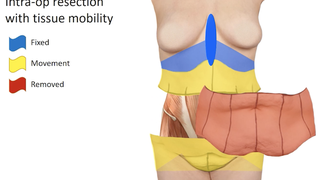Multidisciplinary Team Approach to Weight Loss
Our EBT team offers a collaborative approach to treating excess body weight, obesity, and weight regain after bariatric surgery.
EBT may be an option for patients who have:
- Body mass index (BMI) of 27 or greater
- Difficulty achieving weight reduction goals with diet and exercise
- Weight recurrence after bariatric surgery
- Preference to avoid traditional bariatric surgery
- Criteria that disqualify them from having bariatric surgery
- Dumping syndrome and/or reactive hypoglycemia following bariatric surgery
EBT involves inserting a small, flexible tube through the mouth and into the stomach. UTSW’s Endobariatrics Program offers the following procedures:
Endoscopic Sleeve Gastroplasty (ESG)
ESG is a minimally invasive, incisionless procedure that can reduce the size of the stomach without surgery. ESG can help patients lose up to 15% of their body weight, which can lead to improvements in many weight-related medical problems like diabetes and high blood pressure.
ESGs are outpatient procedures, and most people can go back to their regular activities within a few days.
During your first clinic consultation, we’ll discuss whether you’re a good candidate for ESG. As part of our multidisciplinary approach to weight management, we collaborate closely with the Weight Wellness Program to help patients create sustainable, healthy habits both before and after the procedure.
Revision of Prior Weight Loss Surgery
Many patients have challenges achieving weight reduction goals after bariatric surgery or experience weight recurrence.
EBT offers a minimally invasive method to help these patients achieve a healthier weight. EBT can also treat symptoms of dumping syndrome – where the stomach empties into the small intestines too quickly – that occur after bariatric surgery.
Revision surgeries include:
- Endoscopic revision of sleeve gastrectomy: After a sleeve gastrectomy, the stomach can stretch, meaning patients may feel less full after eating. The result can be difficulty with weight management. As with ESG, sutures are placed in the stomach to decrease the size of the sleeve without any incisions or surgery. This procedure can result in weight reduction and fewer symptoms of dumping syndrome.
- Transoral gastric outlet reduction (TORe): After a gastric bypass, there may be stretching of the gastric pouch and the gastric outlet, which is the connection between the pouch and the intestines. The minimally invasive TORe procedure uses sutures to decrease the size of the outlet. This procedure can help with weight management and symptoms of dumping syndrome.
These are outpatient procedures, meaning there is no need for an overnight hospital stay.











